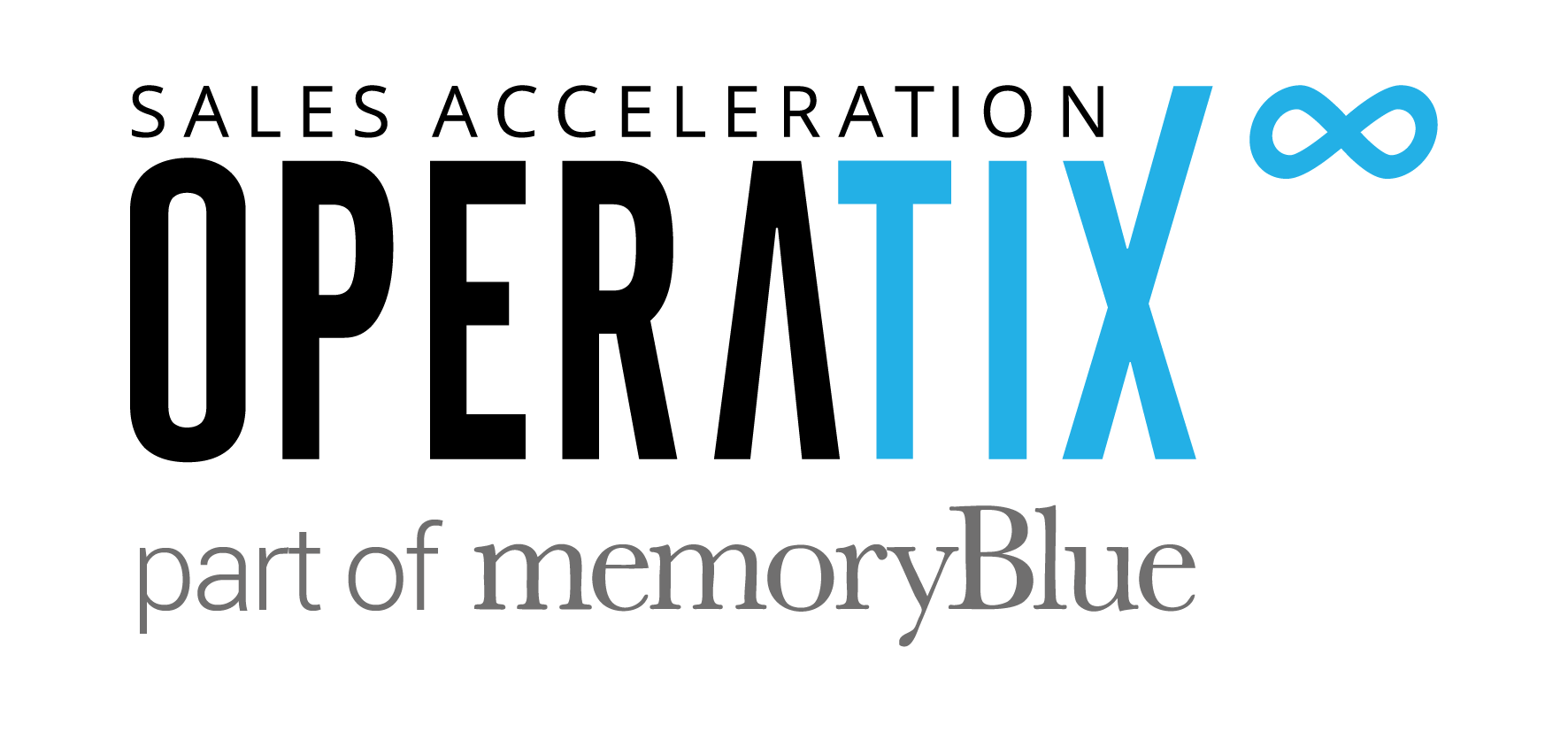There is more to being a master salesperson than picking up the phone day by day. While cold calling is, undoubtedly, a big part of the role of a sales development representative, much more goes into being successful at the job.

Understanding your target market and being clear on your company’s value proposition are fundamental parts of the process that need to be in place to set your sales development program up for success.
In this chapter, you’ll gain expert advice regarding these fundamental elements from the Head of Sales Enablement at Operatix, Joseph Grieves and CEO and Founder of Sales Enablement company Growth Genie, Michael Hanson.
Joe talks us through cold calling and script writing best practices, while Michael gives his expert insight into email cadences. We’ll also delve into the role of a sales development representative, including the importance of defining both an ICP and a target persona, as well as how to use social media to increase sales activities.
This guide to the role of a sales development representative is part of our SDR Handbook – a free comprehensive guide to building and managing a sales development team. Download now for more tips and expert advice.
The Role of a Sales Development Representative:
- Defining Your ICP
- Target Personas
- Cold Calling & Script Writing Best Practices
- Email Cadences & Sequences best practices
- Social Selling Best Practices
- Role of a Sales Development Representative Toolkit
- The Role of a Sales Development Representative Summary
Defining Your ICP
Creating an Ideal Customer Profile (ICP) can cement your team’s understanding of the companies they should target. One of the first mistakes people make when creating an ICP is assuming they should define the buyer they want to target. In actuality, an ICP is a business profile. It outlines the core characteristics of the ideal business that would make them the ideal fit for the solution your company offers.
When creating your ICP, consider the following:
- Industry
- Budget and Revenue
- Company Size
- Geographic Location – Do you want to focus on or exclude any locations?
- Legalities – Any legal reasons that may limit your target customer base, such as government restrictions
- Product or Service Limitations
- Number of Employees
Outlining an ICP allows for better alignment between the sales and marketing teams, not to mention more meaningful conversations.
Target Personas
While an ICP is related to the type of company you want to target, a target persona relates more to the profile of the individual within the organization you are looking to target. This profile goes beyond just demographics, but rather sets out to envision the needs, pain points and buying process of your target customer, as well as how they make decisions.
They typically include:
• Occupation and seniority level
• Business goals and motivations
• Responsibilities within the business
• Challenges and pain points
• Buyer processes and journey
Using a target persona will allow your SDRs to quickly identify which individuals in an account are a good fit or which need to be disqualified. Try to summarise both your ICP and target persona profiles into easy-to-digest paragraphs that can quickly be referred to whenever needed.

Cold Calling and Script Writing Best Practices
Teaching your SDRs to be expert communicators on the phone should always be a priority. This goes beyond following a strict script when picking up the phone, but rather having a high level of confidence and understanding of the prospective client’s specific needs and challenges when doing so.
“It’s not an easy thing to teach; you have to help people craft a solid message that will resonate with the person – a lot of it comes down to the performance of the pitch, too,” explains Joe, “It’s not only about teaching SDRs how to craft a good message but also how to deliver it in a way that is engaging.
“Cold calling is like an art form, it’s teaching people how to be good storytellers. Training must involve bringing people out of their shells and bringing that performance to each and every conversation they have.”
When helping SDRs hone their cold-calling skills and writing their sales pitches, Joe recommends training them using the below six-step methodology:
Step one: why you’re calling
Step two: who you are and what your business does
Step three: the relevant pain points your solution/service solves
Step four: the benefits your solution/service provides
Step five: offering validation, aka who else uses the solution or other evidence it works such as statistics
Step six: the close, tying up the conversation
By using this methodology and training SDRs to include the six steps when preparing their pitch, they’ll have more meaningful conversations while ensuring the necessary information is included.
A pitch should cover the main talking points, potential objections and be a conversational structure rather than a word-for-word conversation. It should be a blueprint of the conversation; after all, SDRs can’t predict everything the lead will say, so they should be prepared for every avenue of the conversation rather than what they hope will happen.
Rejection is a very common part of cold calling and something that should be anticipated. Objection handling should be a key part of sales training via roleplaying and practising answers to the common objections that are likely to come up.
During training, Joe recommends that you undergo roleplay sessions with new SDRs and listen in on calls, ensuring you can answer the following questions with a resounding ‘yes’:
- Do they sound confident in what they are selling?
- Are they delivering the message in a clear, easy-to-understand way?
- Are they concise rather than rambling?
- Is what they’re saying enticing?
Joe calls this the CCE Method: Confident, Concise and Enticing.
“If you want your sales reps to be successful, you’ve got to coach them, listen to their calls, do role plays and walk them through the admin they have to do,” says Joe, “You need to engage with people and it should be an ongoing process.”
Email Cadences & Sequences Best Practices
A multi-touch approach is where a salesperson initiates contact with a prospective customer multiple times with multiple different platforms or methods. This typically includes LinkedIn, email campaigns and phone calls.
While your SDRs may prioritise cold calling, this doesn’t mean you should neglect email campaigns. They can build brand awareness, particularly if your reps summarise the solution in a way that resonates with the lead’s business goals.
“I never recommend email in isolation, it should be used in combination with phone calls, LinkedIn etc,” Michael Hanson, CEO and Founder of Growth Genie, says, “Email is a tool that can build brand awareness – the good thing about email is that they can respond in their own time, whereas if you call someone and they don’t answer, it’s finished. That email is in their inbox forever, essentially, unless they delete it.”
However, opening rates on emails are declining as more and more emails are filling a business person’s inbox. Again, this doesn’t mean avoiding sending emails to prospects but rather tailoring them to be as engaging as possible. Everything from the subject line to the content itself should be personalised to pique the interest of the recipient, otherwise, it’ll get lost in the sea of unanswered emails.
“We recommend a 30-touch cadence, which is basically seven emails, seven LinkedIn touchpoints, then around ten to 15 calls. Each channel works together; LinkedIn is good for research, you can find out lots of information then send them an email about it,” recommends Michael, “But maybe they don’t respond to your email, which is where a phone call comes in or you reach out via LinkedIn. They all work together.
“I know marketing leaders, and generally people are like ‘oh yeah, email is dead. I get hundreds of emails a day. I never check email’, but that’s just one person. I know, like another CEO of a 300-person company. He only responds to emails. He never responds to LinkedIn or WhatsApp or anything. So you just have to work out where your buyer lives and make sure you reach them on their preferred channel.”
Some tips for creating successful email cadences:
• Rather than pitching straight away and going in for the hard sell, give them something for free to help build the relationship. This could be anything from eBooks and case studies to blog posts and podcasts, just ensure it has value to do them.
• You can then tie the above back to a sales conversation; if they engage with a certain topic, then you can assume this may be a pain point of theirs.
• Experimenting with what works with your intended audience is key – what works for one person may not work for the other. Include different types of content in each email and keep track of which type receives the most engagement.
• When structuring your email, include the trigger event (reason for contacting the prospect), the pain point of the business, how you can solve this pain point and a call to action.
• While you can use a template, you still need to personalize aspects of the email to ensure it targets the prospect’s needs and pain points.
• Be careful when using links or attachments in the first email, as this can end up going straight to the spam folder. Instead, give them a brief summary of the content you’d like to send and ask them if it would be of interest.
• Ensure to follow up with emails with a ‘bump’ email, just in case they missed it the first time around. This can be automated.
“You can create a structure, but the most successful salespeople put their own personality, into selling and in their email,” recommends Michael, “You don’t want your SDRs to be robots.”

Social Selling Best Practices
As the role bridges the gap between sales and marketing, it should come as little surprise that social media platforms have become a big part of an SDR’s toolkit, especially LinkedIn. Building a personal brand on LinkedIn can not only make it easier to find leads and contact names but also increase inbound leads.
Here are some social selling best practices:
• Portray yourself authentically and creatively – don’t be afraid to show off your personality in posts
• Post relevant content that your audience will naturally engage with and find interesting, ensuring
to do so regularly (consistency is key)
• Take advantage of the algorithm by keeping an eye on what is popular in your niche and industry – add
your own flair and opinion, as well as interact with other pieces of content to offer your input
• People are more likely to buy from those they trust, so prioritize genuine interaction and build
relationships
• Add a note that sparks conversation and introduces you when connecting with people
• Join relevant LinkedIn groups, ensuring to engage with posts
• Track engagement to see what type of content is a hit with your audience – just be careful not to
become repetitive.
Don’t overlook the power of social media and personal branding. It may not be a traditional tactic, but platforms like LinkedIn are revolutionizing sales and marketing.
Role of a Sales Development Representative Toolkit:
• The CCE Method by Joseph Grieves
• How to Build a Personal Brand by Daniel Disney
• How to Get Outbound Sales Development Cadences Right by Michael Hanson
• Drive Sales by Investing in your Personal Brand by Dale Dupree
• Simplifying Sales Emails: Creating Compelling Campaigns by Ollie Whitfield
The Role of a Sales Development Representative Summary:
• Your ICP and target personas need to be clearly defined to understand your audiences
• Not only should your SDRs understand how to craft a good message, but also how to deliver it in a way that is enticing
• Sales representatives should not just rely on cold calling, ensuring to spend time delivering creative email sequences and social media messaging
• A multi-touch approach, where an SDR initiates contact with a prospective customer multiple times on different platforms, is essential in getting the best from your leads
For more expert advice on building and managing a sales development team, download our free SDR Handbook – no sign-up required.



